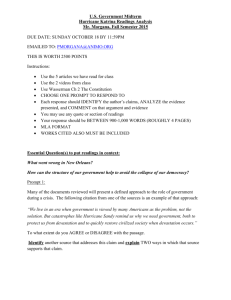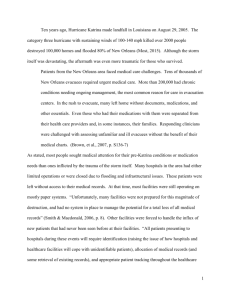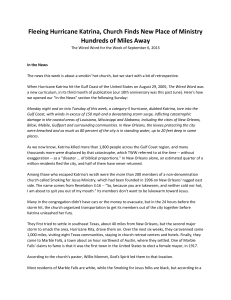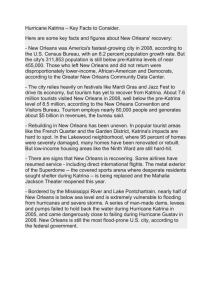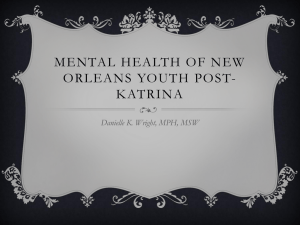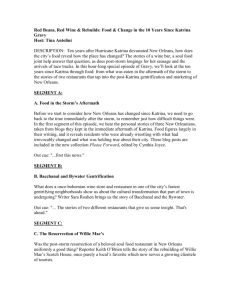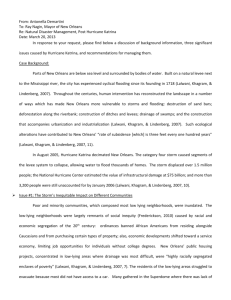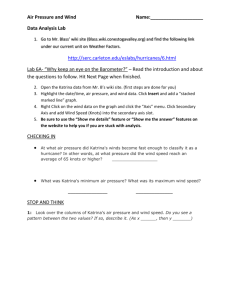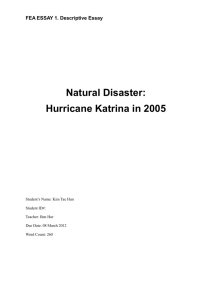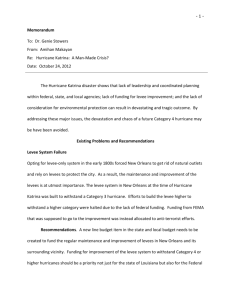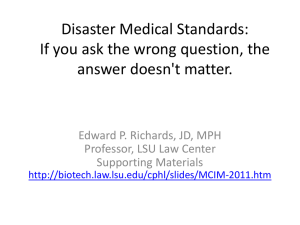Katrina Memo
advertisement
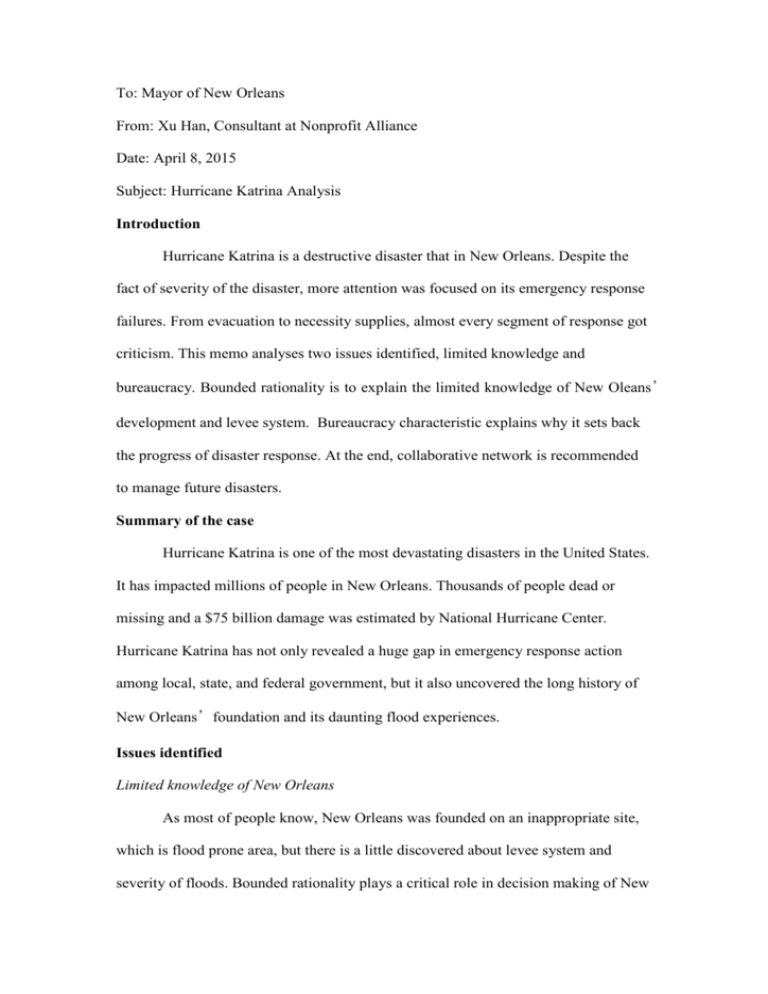
To: Mayor of New Orleans From: Xu Han, Consultant at Nonprofit Alliance Date: April 8, 2015 Subject: Hurricane Katrina Analysis Introduction Hurricane Katrina is a destructive disaster that in New Orleans. Despite the fact of severity of the disaster, more attention was focused on its emergency response failures. From evacuation to necessity supplies, almost every segment of response got criticism. This memo analyses two issues identified, limited knowledge and bureaucracy. Bounded rationality is to explain the limited knowledge of New Oleans’ development and levee system. Bureaucracy characteristic explains why it sets back the progress of disaster response. At the end, collaborative network is recommended to manage future disasters. Summary of the case Hurricane Katrina is one of the most devastating disasters in the United States. It has impacted millions of people in New Orleans. Thousands of people dead or missing and a $75 billion damage was estimated by National Hurricane Center. Hurricane Katrina has not only revealed a huge gap in emergency response action among local, state, and federal government, but it also uncovered the long history of New Orleans’foundation and its daunting flood experiences. Issues identified Limited knowledge of New Orleans As most of people know, New Orleans was founded on an inappropriate site, which is flood prone area, but there is a little discovered about levee system and severity of floods. Bounded rationality plays a critical role in decision making of New Orleans’ development. According to Simon, bureaucrats have fragmented knowledge of possible consequences, and values can not be perfectly anticipated, therefore, only a few alternatives can be considered. (Simon, 1997) When levee-only policy was brought up, federal government determined to take action to implement it at full scale, believing that this policy will not only address water problem, but also for expansion. (Lalwani, 2007) However, it turned out to be a complete failure. Decision makers did not anticipate this possible consequence with their limited knowledge. In another word, their rationality is bounded. Bureaucracy in emergency response Hurricane Katrina has revealed a couple of bureaucratic setbacks in emergency response process. Local, state and federal government had to go through a painful process coordinating the responses, which delays a big deal in evacuation. One of the characteristics of bureaucracy is office hierarchy and levels of graded authority according to Webber. It determines a super-subordination ordered system. (Webber,1946) This characteristic has generated inefficient back and forth coordination among different levels of government agencies. As FEMA spokesman stated that FEMA only acted after a request from the state has arrived, while Greyhound bus company mobilized their buses after getting approval from FEMA. (Lalwani, 2007) This process has delayed evacuation for three days. Recommendations Collaborative network of emergency response Emergency response is different from other public administration daily operation. It requires immediate attention and action from every level of the society. Especially the society is more complex than ever, there is scarcely a single duty of government which was once simple which is not now complex. (Wilson, 1887) If Wilson has ever felt the complexity of issues a century ago, current issue can only be more demanding. Multiple levels of government duties, equity issues, and severity of Hurricane Katrina has made emergency response became more complex. Local, state and federal government agencies shared the responsibilities that were not clearly defined before Katrina hit. Building a collaborative network that integrates local, state, federal government agencies, as well as local nonprofits, who are specialized in disaster response, will be beneficial to somewhat simplify the emergency response. Agranoff has emphasized the importance of networks, which is a collaborative management process of facilitating and operating in multi organizational arrangements to solve problems that cannot be solved or solved easily, by single organization. (Agranoff, 2006) Hurriance Katrina is a catastrophic disaster that beyond the capacity of one single organization to respond, therefore, collaborative network will be well fit into this situation. Furthermore, information-sharing is critical in collaborative network, because it improves the efficiency of cross-government coordination. (Yang & Maxwell, 2011) Hurricane Katrina emergency response did not have much information-sharing as officials failed to act decisively. (Lalwani, 2007) By having a collaborative network that closely share their respective knowledge to reach to an agreement on future emergency response will likely to mitigate the damage of disasters. Conclusion Even though Hurricane Katrina has revealed much of the problems of its development and disaster response, it also brought opportunity to learn and improve. If it leads to better understanding and administrative systems that benefit New Orleans’people, the government has done its duty to represent its people. References Agranoff, Robert (2006) Inside Collaborative Networks: Ten Lessons for Public Managers. Public Administration Review Lalwani, Tanya. (2007) Hurricane Katrina: A Man-Made Crisis? Seattle, WA: The Electronic Hallway. Simon, Herbert (1997) Administrative Behavior, 4th ed. New York: Free Press Webber, Max (1946) Bureaucracy: Characteristics of Bureaucracy. UK: Oxford University Press. Wilson, Woodrow (1887) The Study of Administration. Political Science Quarterly, Vol. 2, No. 2, pp. 197-222 Yang, Tung-Mou & Maxwell, Terrence A. (2011) Information-sharing in Public Organizations: A Literature Review of Interpersonal, Intra-organizational and Inter-organizational Success Factors. Government Information Quarterly 28: 164-175

